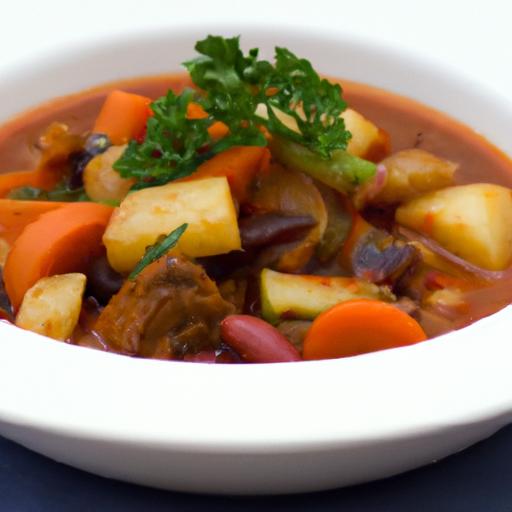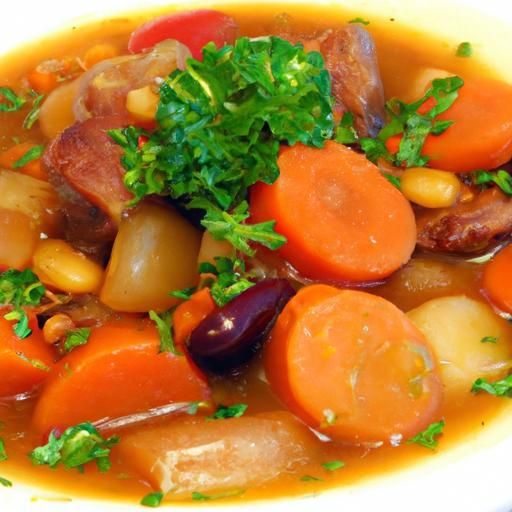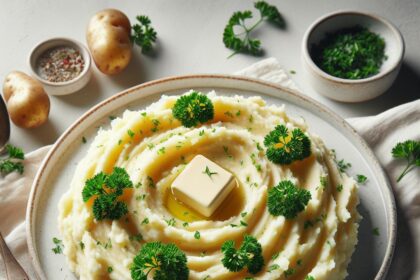There’s something irresistibly cozy about a slow cooker stew-its rich aroma wafting through the kitchen, the tender meat melting off the bone, and the hearty vegetables swimming in a savory broth. But sometimes, after hours of patient simmering, the stew’s texture can miss the mark: too watery, too thin, or lacking that luscious, satisfying thickness that invites you to dive right in. Whether you’re a slow cooker novice or a seasoned simmerer, mastering the art of thickening your stew to perfection is a game-changer. In this article, we’ll explore creative and practical tips to transform your slow cooker stew from soupy to sublime, ensuring every spoonful is a comforting, velvety embrace.
Thickening Slow Cooker Stews: Tips for Perfect Texture
Thickening slow cooker stews is both an art and a science that transforms a simple medley of ingredients into a luscious, soul-warming dish. Whether you prefer a hearty beef stew or a vibrant vegetable ragout, achieving that perfect thickness elevates your meal from ordinary to extraordinary. I remember my first attempt when the stew was either too watery or gloopy – it taught me the value of selecting the right thickening agent and mastering when to incorporate it for maximum flavor and texture harmony.
Prep and Cook Time
- Preparation: 20 minutes
- Cooking: 6-8 hours (low heat setting)
- Total Time: 6 hours 20 minutes to 8 hours 20 minutes
Yield
- Serves 6 hearty portions
Difficulty Level
- Medium – requires attention to timing and ingredient choices for best results
Ingredients
- 2 lbs beef chuck, cut into 1-inch cubes
- 3 cups low-sodium beef broth
- 2 cups diced carrots
- 1 cup chopped celery
- 1 large onion, finely chopped
- 4 cloves garlic, minced
- 1 cup diced tomatoes (canned or fresh)
- 2 tbsp tomato paste
- 1/2 cup red wine (optional, adds richness)
- 3 tbsp all-purpose flour, sifted
- 2 tbsp cornstarch
- 2 tbsp cold water
- 2 tbsp olive oil
- 1 tsp dried thyme
- 2 bay leaves
- Salt and freshly ground black pepper, to taste
Instructions
- Brown the beef: In a large skillet, heat olive oil over medium-high heat. Add beef cubes in batches, ensuring not to overcrowd the pan. Sauté until each piece is golden brown on all sides, about 5 minutes per batch. Set aside.
- Sauté the aromatics: In the same skillet, add onion, garlic, carrots, and celery. Cook until softened and fragrant, about 5 minutes, stirring frequently.
- Deglaze and combine: Pour in red wine (if using) and scrape the browned bits from the pan – this adds deep flavor. Transfer all contents to the slow cooker.
- Add liquids and seasonings: Stir in beef broth, diced tomatoes, tomato paste, thyme, bay leaves, salt, and pepper. Return browned beef to the slow cooker, mixing gently.
- Slow cook: Cover and cook on low for 6-8 hours, or until beef is tender and flavors meld beautifully.
- Prepare thickening slurry: About 30 minutes before serving, whisk together cornstarch and cold water until smooth. Alternatively, mix flour with a bit of cold water to form a paste.
- Thicken the stew: Ladle some hot broth from the slow cooker into the slurry to temper it, stirring constantly. Pour the mixture back into the slow cooker, stirring to distribute evenly.
- Cook to desired thickness: Cover and cook on high for 20-30 minutes more, until the stew has thickened beautifully. Adjust seasoning if needed.
- Final touches: Remove bay leaves, give a last stir, and serve piping hot.
Tips for Success
- Choosing thickeners: Use flour for a gentle, creamy texture; cornstarch offers a glossy finish and quicker thickening; arrowroot is perfect for a translucent, smooth finish. Avoid adding starches too early to prevent cloudiness or breakdown of texture during slow cooking.
- Timing matters: Always add thickening agents near the end of cooking to lock in flavors and avoid a pasty texture. Tempering your slurry prevents lumps.
- Natural alternatives: Pureed root vegetables or mashed beans can also create natural thickness while adding nutritional value. Blend a portion of the cooked stew, then stir back in.
- Troubleshooting: If your stew is too thin, don’t hesitate to repeat the slurry process in smaller increments. If overly thick, gradually add small amounts of broth or water.
- Make ahead: Stews often taste better the next day. Refrigerate overnight and reheat gently, adjusting thickness and seasoning prior to serving.
Serving Suggestions
Present your thickened stew in rustic bowls, garnished with freshly chopped parsley or thyme sprigs to brighten the plate. Accompany with crusty artisan bread or buttery mashed potatoes to soak up every rich, velvety drop. A dollop of sour cream or a sprinkling of grated sharp cheddar can add a decadent touch, especially with beef or lamb varieties.

| Nutrient | Per Serving |
|---|---|
| Calories | 410 kcal |
| Protein | 35 g |
| Carbohydrates | 22 g |
| Fat | 15 g |
For more on slow cooker magic, check out our collection of slow cooker beef recipes. To deepen your understanding of thickening techniques, visit The Culinary Institute of America’s thickening agents guide.
Q&A
Q&A: Thickening Slow Cooker Stews – Tips for Perfect Texture
Q1: Why do some slow cooker stews turn out too watery, and how can I fix that?
A1: Slow cookers gently simmer ingredients over hours, which can sometimes lead to extra liquid in your stew. This happens because vegetables and meats release moisture while cooking low and slow. To fix a watery stew, thicken it after cooking using methods like simmering uncovered to reduce liquid, stirring in a slurry of cornstarch or flour mixed with cold water, or adding starchy ingredients like mashed potatoes or instant mashed potato flakes.
Q2: When’s the best time to add thickening agents during slow cooking?
A2: For the smoothest texture, add thickening agents toward the end of the cooking process. Adding flour or cornstarch too early can cause them to break down, losing their thickening power, and sometimes create a starchy or gummy texture. Try thickening in the last 15-30 minutes or after turning off the slow cooker and then simmering on the stovetop if necessary.
Q3: Can natural thickeners from within the stew work?
A3: Absolutely! Root vegetables like potatoes, carrots, and parsnips break down during cooking and release starch, helping to naturally thicken your stew. Beans and lentils are also great texture enhancers. If you desire extra creaminess, consider adding pureed vegetables or even a splash of cream or coconut milk near the end.
Q4: What’s the secret to achieving a velvety stew without lumps?
A4: To get that luscious, lump-free texture, dissolve your thickening agent fully in cold liquid before adding it to the stew-never sprinkle dry flour or starch directly in. Whisk cornstarch or flour into cold broth, water, or wine until smooth, then stir it steadily into your hot stew. Let it cook for several minutes to thicken fully.
Q5: Are there alternatives to cornstarch and flour for thickening?
A5: Yes! Arrowroot powder and potato starch are fantastic gluten-free options that work similarly to cornstarch. Mashed beans, ground nuts, or even a handful of quick oats can also add body and complexity. For a silky finish, stirring in a spoonful of nut butter or cream cheese can provide thickness and flavor depth.
Q6: How do I prevent over-thickening?
A6: Start small-add your thickener gradually and wait a few minutes to see the stew’s final consistency. Slow cookers retain heat, so the stew might thicken more as it cools or rests. If it gets too thick, stir in some extra broth or water to loosen it up before serving.
With these tips, your next slow cooker stew will have the perfect hearty, spoon-coating texture every time-no more thin, disappointing broths!
Future Outlook
As the savory aromas of a slow cooker stew fill your kitchen, the perfect texture becomes the final pièce de résistance. Thickening your stew isn’t just a step-it’s an art form that transforms a hearty medley of ingredients into a luscious, soul-warming masterpiece. Whether you opt for the velvety embrace of a roux, the rustic charm of mashed potatoes, or the natural magic of reduction, each method offers its own pathway to that ideal, irresistible consistency. So next time you let your stew simmer low and slow, remember these tips to elevate your dish from great to unforgettable-because in the world of slow cooking, texture is the secret ingredient that turns a meal into a memory.








